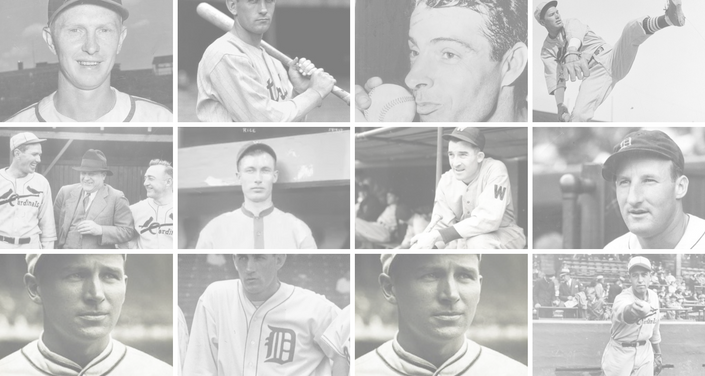The Brooklyn Dodgers were a Major League baseball team, active primarily in the National League (founded 1876) from 1884 until 1957, after which the club moved to Los Angeles, California, where it continues its history as the Los Angeles Dodgers. The team moved west at the same time as its longtime rivals, the New York Giants, also in the National League, relocated to San Francisco in northern California as the San Francisco Giants. The team’s name derived from the reputed skill of Brooklyn residents at evading the city’s trolley streetcar network. The Dodgers played in two stadiums in South Brooklyn, each named Washington Park, and at Eastern Park in the neighborhood of Brownsville before moving to Ebbets Field in the neighborhood of Flatbush in 1913. The team is noted for signing Jackie Robinson in 1947 as the first black player in the modern major leagues.
[jetpack_subscription_form title=”Join the Community” subscribe_text=”We bring you cool stories about the game, players, ballparks and the people that shaped the game!” subscribe_button=”Join us!” show_subscribers_total=”1″]
Subscribe to our Podcast
The Daily Rewind
on Apples Podcast | Spotify | Google | Stitcher
And connect with us wherever else you listen to Podcast and hangout!
Ebbets Field
1926 – The Braves are at Ebbets Field with Brooklyn’s Hank DeBerry on third base, Dazzy Vance on second, and Chick Fewster on first. Babe Herman drives the ball against the right field wall, and DeBerry scores. Vance holds up, then rounds third headed for home. Fewster stops at third base. The RF throws home and traps Vance, who heads back to third. Herman slides into the base as Fewster steps off. Herman is out for passing a baserunner. Fewster, thinking he’s out, too, walks off with Babe, and gets tagged out. Vance, still on third base, later admits it was his fault, but Herman, who doubles into a double play, gets the blame.

At Ebbets Field, the Robins come from behind to edge the Giants, 3 – 2, behind Dazzy Vance. Harvey Hendrick dinks a 2-run homer in the 8th, off Larry Benton, to tie, and Jake Flowers singles with two out in the 9th to drive home the winner. The ecstatic fans respond by covering the field with straw hats.

At Brooklyn’s Ebbets Field, Ival Goodman hits an unusual home run when his fifth-inning fly ball lands and stays on top of the scoreboard in right field. With the perched ball considered in play, the three Dodger outfielders watch the Reds’ right fielder round the bases for an easy inside-the park round-tripper in their 7-2 loss to Cincinnati.
Dodger right-hander Fred Frankhouse holds the Reds hitless for 7.2 innings before a heavy downpour ends the Ebbets Field contest permanently. The right-hander’s 5-0 victory will be one of the 31 “no-no’s” erased when MLB redefines a no-hitter in 1991 as a game in which a pitcher throws nine innings or more without giving up a hit.

The five-year ban on broadcasting games played by the New York major league teams ends when Red Barber, hired away from the Reds by Larry McPhail, calls Brooklyn’s 7-3 loss to the Giants at Ebbets Field. In 1934, the two National League teams and the Yankees agreed not to air their games on the radio, fearing the exposure would reduce the number of fans attending games.
Dodger shortstop Tommy Brown becomes the youngest player (17 years, 8 months, and 14 days) in major league history to hit a home run. The round-tripper by ‘Buckshot’, who started his career as a 16 year-old high school student, will be the only run Brooklyn scores off 30 year-old Pirates southpaw Preacher Roe, who goes the distance in the 11-1 rout of the home team at Ebbets Field.

Ernie Harwell, filling in for Red Barber, who is recovering from a bleeding ulcer, calls his first major league game as the Dodgers beat the Cubs at Ebbets Field, 5-4. To obtain the future Hall of Fame broadcaster, Brooklyn general manager Branch Rickey trades minor league catcher Cliff Daper to the Atlanta Crackers.
At Ebbets Field‚ the Braves top the Dodgers‚ 5 – 3‚ in a game that Brooklyn protests. In the 8th inning‚ Duke Snider belts a drive off the CF screen that umpire Artie Gore signals a home run. The Braves point out that‚ according to the ground rules‚ the ball is still in play‚ and Gore sends Snider back to third base. When Duke is stranded there‚ the Dodgers protest. The protest will be rejected by Ford Frick‚ who censors Gore for the confusion he caused by his “bad judgment and slow thinking.”

Every one who shows up with a musical instrument is admitted free to Ebbets Field. 2,426 fans take advantage of the offer, including one with a piano. The Dodgers have a motive in countering the local musicians’ union which wants to silence the non-union Sym-Phoney. The Dodgers outplay the Braves, 7 – 6, as Gil Hodges belts a three-run homer in the 8th, following an intentional walk to Roy Campanella, who had homered earlier.

Mickey Mantle, in the third inning of an eventual 11-7 victory in Game 5, blasts a Russ Meyer pitch high into the upper deck of Ebbets Field, a rare occurrence for a left-handed batter, to become only the fourth player in World Series history to hit a grand slam. The Yankees slugger joins teammate Gil McDougald (1951), Elmer Smith (1920), and Tony Lazzeri (1936) in accomplishing the feat.
In his second start, rookie Brooklyn lefty Karl Spooner shuts out Pittsburgh, 1 – 0, on a Gil Hodges homer in the 8th. He fans 12 for a total of 27 strikeouts in his first two major league games, establishing a new record. Gil Hodges’s 8th-inning homer, his 25th at Ebbets Field (a new club record), gives him 42 for the season, tying him with Duke Snider for the most by a Dodger.






























































































































































































































































































































































































